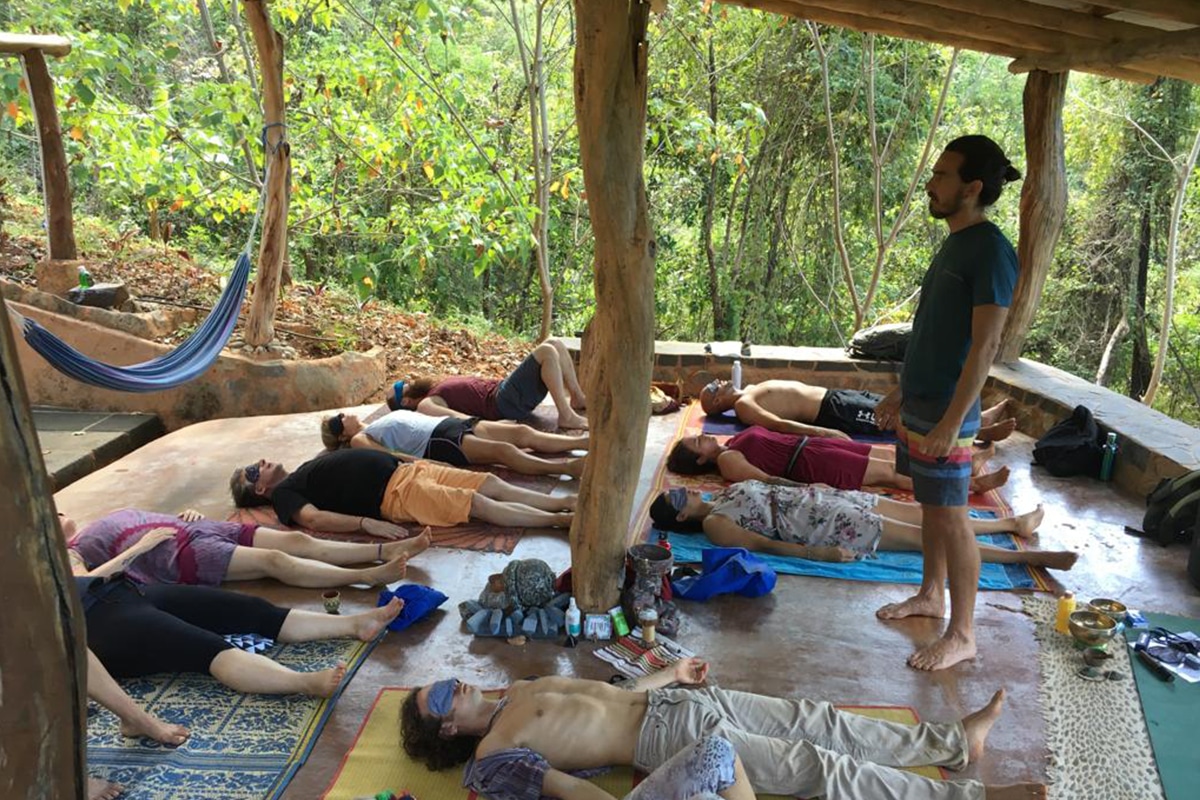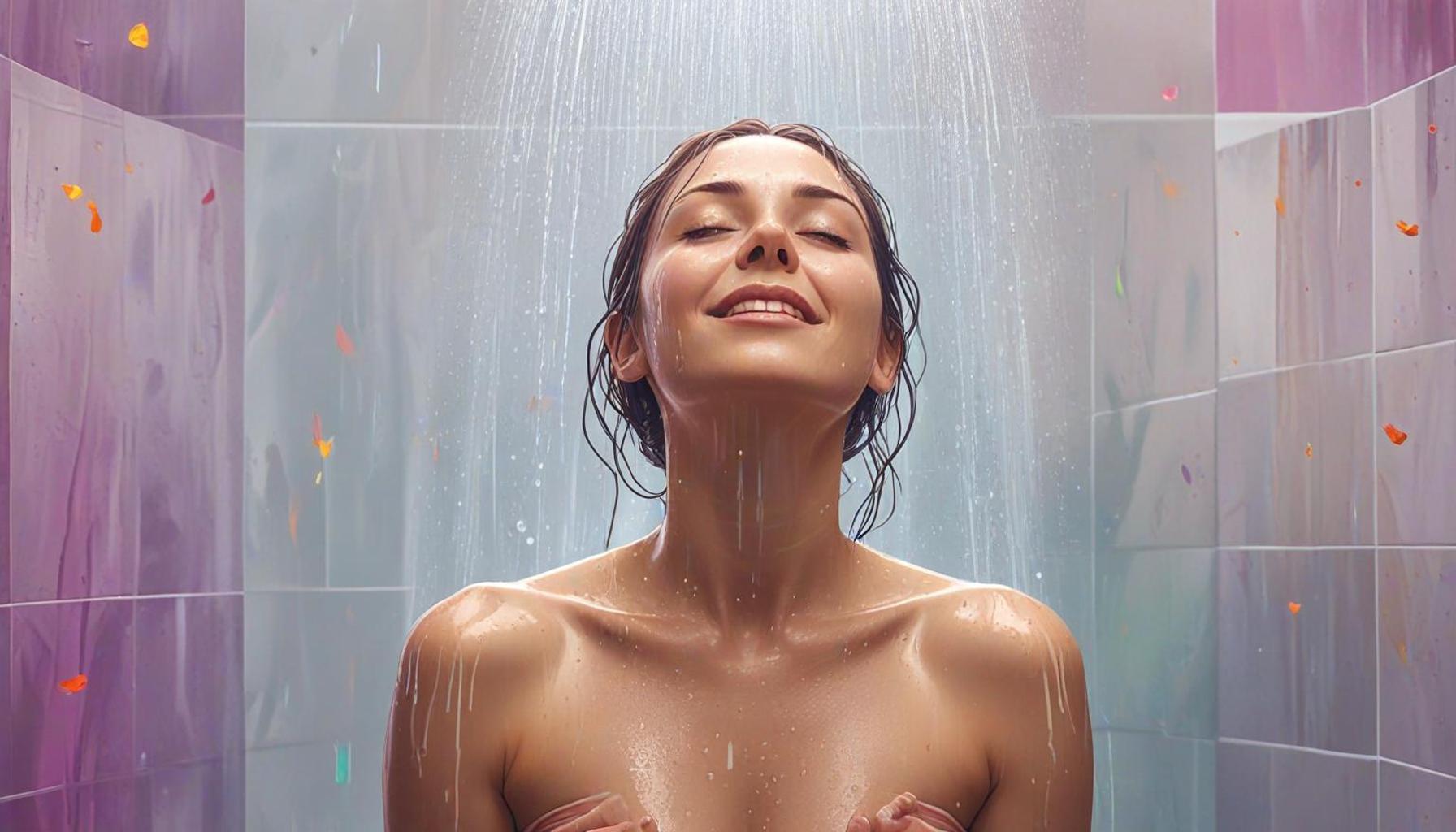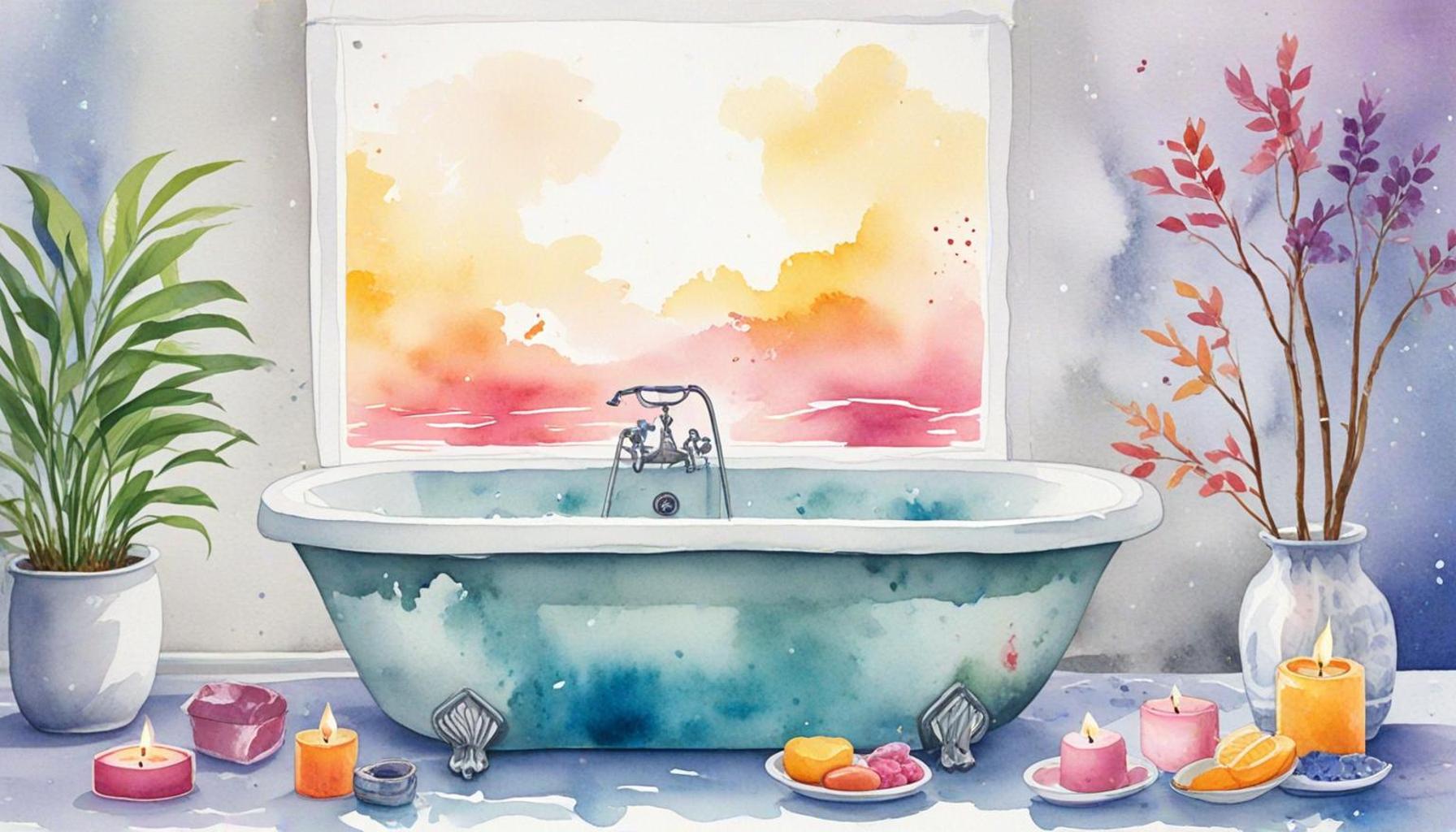Exploring the Synergy between Movement and Meditation in Bathing for Stress Relief

Understanding the Elements of Stress Relief
In an era dominated by relentless work demands and urban chaos, individuals often seek innovative ways to manage stress effectively. This quest for relaxation is particularly relevant for those living in bustling Nigerian cities like Lagos or Abuja, where the pressures of daily life can feel overwhelming. An intriguing method emerges from blending movement, meditation, and water therapy, offering a holistic approach to achieving emotional and physical well-being.
Movement: Energizing Body and Mind
The inclusion of movement in one’s routine is a vital element in combating stress. Activities like gentle stretching or traditional Nigerian dances, such as the energetic Atilogwu, provide not only physical exercise but also a joyful release. Tai Chi, a form of slow and deliberate movement practiced widely in Asia, offers a calming technique that can easily be integrated into bathing routines. Engaging in these movements prior to or during a bath can help energize the body, stimulate circulation, and prepare the mind for relaxation.
Meditation: Finding Inner Peace
Meditation enhances the bathing experience by promoting mindfulness. This practice involves focusing the mind and eliminating distractions, which aligns perfectly with bathing. For instance, turning off mobile devices and dedicating time to breathe deeply and reflect can cultivate tranquility. Incorporating aspects familiar to Nigerian culture, such as guided meditations that include local sounds or spoken affirmations in native dialects—whether Yoruba, Igbo, or Hausa—can add a rich cultural dimension to the practice, making it more relatable and effective.
Water Therapy: The Healing Power of Water
Water therapy taps into the soothing properties of water, known for its calming effect on the nervous system. In Nigeria, the tradition of using various types of baths, whether it is a hot herbal bath infused with local plants or a cold soak during the heat of the day, demonstrates the significance of water in promoting wellness. Submerging in warm water, for instance, helps to relax muscles and ease tension, creating a perfect environment for meditation and movement.
A Holistic Approach to Stress Relief
By combining movement, meditation, and water therapy, individuals unlock a multifaceted approach to stress relief that addresses both the body and mind. This synergy nurtures mental clarity and emotional stability, crucial elements for fostering resilience in today’s fast-paced life. For example, a simple routine could involve performing gentle stretches accompanied by calming breaths while soaking in a tub infused with aromatic oils derived from local herbs, creating a personalized retreat.
Ultimately, exploring this interconnectedness paves the way for embracing a holistic lifestyle that enhances one’s overall quality of life. Engaging with these practices can lead to profound changes in how individuals interact with stress and can significantly improve daily living. As we proceed to outline practical steps for integrating these methods into our lives, readers will discover not just a way to unwind but a pathway to greater health and happiness.
YOU MAY ALSO LIKE: Read read another article
The Dance of Movement and Serenity of Meditation
Integrating movement and meditation into bathing rituals can transform an ordinary experience into a comprehensive therapy aimed at stress relief. The fusion of these practices allows for a dynamic engagement of the body and mind, creating a holistic approach that is particularly beneficial in a society where stress is commonplace. This fusion does not merely alleviate stress but fosters resilience and empowers individuals to cope more effectively with the demands of everyday life.
The Impact of Movement on Stress Relief
Movement, whether through traditional cultural dance or modern physical fitness, serves as a powerful antidote to stress. Research indicates that physical activity releases endorphins, the body’s natural mood lifters. In Nigeria, this can be as simple as incorporating local dances like Ekombi or Gumbe—activities known for their rhythmic motion and communal spirit. Even leisurely walks or gentle exercises can invigorate the body while promoting relaxation.
Integrating movement into bathing can be a rewarding experience. A practical way to achieve this is to:
- Start with simple stretches: Prior to entering the bath, perform stretches to enhance flexibility and circulation.
- Incorporate rhythmic movements: As you soak, move your body gently in the water, allowing the buoyancy to support your efforts.
- Add aquatic exercises: Practice light exercises like leg lifts or arm movements to engage different muscle groups while enjoying the warmth of the bath.
The Calming Influence of Meditation
Meditation complements movement, creating a peaceful ambiance essential for deep relaxation. Employing mindfulness techniques while bathing allows individuals to immerse themselves in the experience fully. This can be achieved through guided meditations infused with nature sounds indigenous to Nigeria, such as the soothing chorus of crickets or the rustling of palm trees. The objective is to create not just a moment of quiet but a sustained connection with one’s inner self.
To create a meditative atmosphere during bathing, individuals can:
- Set the mood: Utilize scented candles or essential oils like sandalwood or lemongrass, enhancing both the olfactory and visual experience.
- Practice deep breathing: Focus on inhaling deeply, holding, and exhaling slowly to anchor the mind away from distractions.
- Engage in reflective thought: Consider personal affirmations or express gratitude as you immerse yourself in the warm water.
By combining movement with meditation, an individual crafts a soothing escape from the stresses of daily life. This synergy between physical activity and mental calmness doesn’t just promote relaxation in the moment; it fosters long-term emotional resilience, empowering one to navigate life’s challenges more skillfully.
As we explore further, the article will delve into the specifics of water therapy and how it interacts with these practices to create a transformative bathing experience for stress relief.
Bathing is often seen simply as a means of personal hygiene, but it can hold transformative potential for stress relief when combined with movement and meditation practices. Immersing oneself in water offers a unique experience, as it provides gentle resistance, promoting a sense of buoyancy and relaxation. This resistance can encourage subtle physical movements that not only increase circulation but also deepen the mind-body connection.
Moreover, the incorporation of meditation during bathing enhances the experience. As water envelops the body, it fosters a serene environment conducive to mindfulness, allowing for a greater awareness of the present moment. This combination of movement and meditation creates a holistic approach to wellness that can reduce anxiety and promote mental clarity. Studies have shown that engaging in mindful movement, such as gentle stretching or tai chi in a bath setting, can amplify the calming effects of the water, leading to significantly lower stress levels.
Another compelling aspect of this synergy is the sensory experience that bathing provides. The soothing sound of water, the feeling of warmth, and even the aromatic qualities of bath oils can serve as grounding elements, fostering a meditative state. When combined with intentional physical movement, they can lead to profound relaxation and healing. Whether you engage in slow, rhythmic breathing or practice gentle, flowing motions, the act of bathing becomes a ritual, inviting calm and tranquility into your busy life.
Incorporating breathing exercises into this ritual can further enhance the stress-relieving benefits. By aligning breath with movement, one can cultivate a deeper state of relaxation. As you inhale deeply, you may visualize inhaling peace and exhaling tension. This synergy between breath, movement, and water creates a nurturing atmosphere for your body and mind to heal.
| Benefits | Aspects |
|---|---|
| Promotes Relaxation | Soothing water acts as a natural stress reliever. |
| Enhances Mindfulness | Creates a meditative environment conducive to present-moment awareness. |
By diving deeper into the intriguing connection between movement, meditation, and bathing, individuals can unlock an effective pathway for stress relief that honors both the body and mind. This multifaceted approach to wellness invites exploration and curiosity, encouraging individuals to seek further knowledge and personal experimentation with these techniques.
RECOMMENDED: Check out this similar article
Harnessing the Therapeutic Power of Water
As we delve deeper into the journey of exploring the synergy between movement and meditation in bathing, it’s essential to highlight the role of water itself as a profound healing element. The calming properties of water are well documented, with studies showcasing its ability to reduce stress and enhance well-being. In Nigeria, where water plays a significant role in cultural practices—from traditional cleansing rituals to communal bathing spaces—this natural element warrants further appreciation as a tool for stress relief.
The Science Behind Water’s Calming Effect
Water therapy, often referred to as hydrotherapy, has roots in ancient civilizations where water was revered for its restorative properties. Scientific studies reveal that immersion in warm water can dilate blood vessels, improve circulation, and promote relaxation. Furthermore, the weightlessness experienced while submerged can alleviate tension in the body, allowing for greater freedom of movement and a deeper connection with one’s inner self.
To incorporate the soothing aspects of water into bathing rituals, individuals might consider the following practices:
- Warm Baths: A warm bath mimics the comforting embrace of water, promoting muscle relaxation and enhancing the body’s natural healing processes.
- Soothing Baths with Herbal Ingredients: Infusing bathwater with local herbs like zobo or bitter leaf can enhance relaxation while offering aromatic experiences that invigorate the senses.
- Floating Techniques: Engaging in gentle floating movements can relieve stress, allowing individuals to surrender to the buoyancy of the water while exploring meditation.
Creating a Ritual of Mindfulness in Water
Establishing a mindful bathing practice involves not only movement and meditation but also setting a ritualistic tone that enhances the overall experience. This can be accomplished by curating the environment around your bathing space. For instance, incorporating the use of locally crafted ceramic or wooden bathing accessories can create a tactile connection to one’s cultural heritage, further enriching the meditation aspect.
To foster mindfulness in bathing, individuals can take steps to:
- Design a Sanctuary: Create an inviting space by placing plants or flowers that thrive in Nigeria’s diverse ecosystem, enhancing both visual and olfactory elements.
- Engage in Sound Therapy: Listen to sounds that resonate with your spirit, whether it’s traditional Nigerian music, the chirping of birds, or the gentle flow of water, to connect deeper with the experience.
- Visualize: Use visualization techniques while bathing, picturing a serene location such as the tranquil shores of the Atlantic Ocean, helping to transport the mind away from stressors.
The transformative power of water combined with the deliberate movements and focused meditation during bathing can create an atmosphere where stress dissipates, allowing tranquility to flourish. This synthesis not only nurtures the body and mind in the moment but also instills a lasting sense of peace, equipping individuals with the tools necessary to face daily challenges with a renewed sense of vitality.
As we continue to uncover these profound connections, the impending exploration will focus on specific cultural practices in Nigeria that seamlessly blend movement, meditation, and bathing, showcasing the depth of this unique therapeutic approach.
ADDITIONAL INSIGHTS: Expand your understanding here
Conclusion
In our exploration of the intricate synergy between movement and meditation in bathing for stress relief, it becomes evident that this dynamic interplay offers not only a rejuvenating experience but also profound therapeutic benefits. By integrating the calming properties of water with mindful movement and focused meditation, individuals can immerse themselves in a holistic ritual that promotes relaxation and emotional resilience. Whether through the gentle swaying of the body or the serene immersion in warm water, these practices cultivate a sanctuary for the mind and body to unwind.
As the societal pressures of modern life escalate, the significance of stress management becomes increasingly paramount. Embracing cultural practices that honor the healing potential of water—including the use of local herbs and sound therapy—serves to deepen our connection to our heritage while fostering personal well-being. These rituals not only remind us of the restorative capabilities found within our natural environments but also encourage a return to mindfulness.
Ultimately, the path to stress relief through movement and meditation in bathing is an invitation to rediscover the art of self-care, allowing us to emerge with a renewed sense of clarity and purpose. As we continue to understand and practice these age-old traditions, we empower ourselves to navigate life’s challenges with greater grace. The journey does not end here; it beckons us to explore and embrace the myriad cultural practices across Nigeria that further enrich our understanding of this harmonious connection, all while nurturing our mind, body, and spirit.


